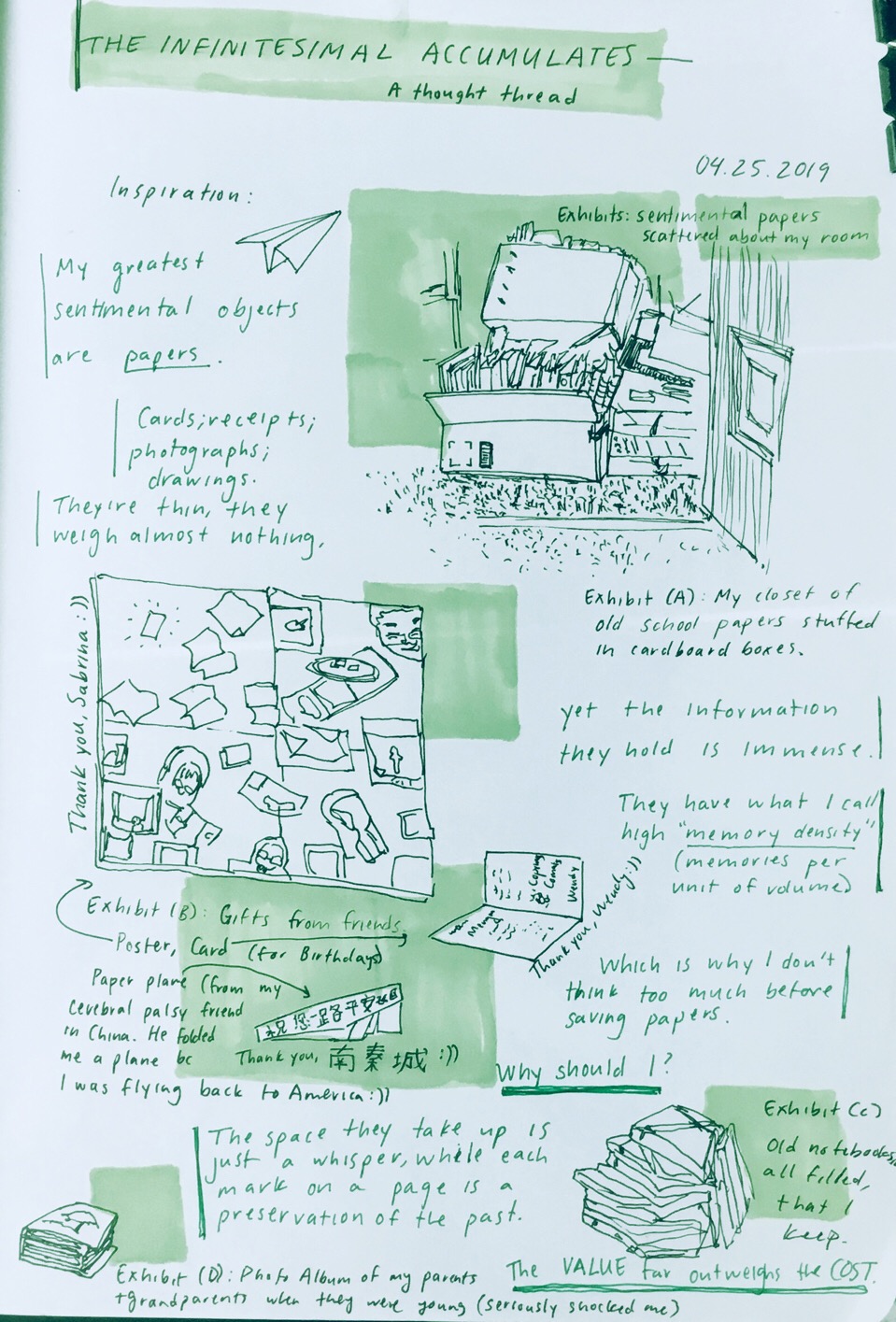Inspired by a thread of thoughts, this project was my first introduction to p5.js. Here is a peek at how I document my code process for my own learning purposes. Below, I cover inspiration and ideation.
My greatest sentimental objects are papers. Cards; drawings; receipts; photographs: they're thin, they weigh almost nothing, yet the information they hold is immense. They have what I call high "memory density" (memories per unit of volume).
Which is why I don't think too much before saving papers. Why should I? The space they take up is just a whisper, while each mark on a page is a preservation of the past. The value far outweighs the cost.Recently, though, I came to face the consequences of my paper-hoarding tendencies when my box of old school assignments spilled open. It made me think of Fermi Questions, this competition I took part in as a member of my highschool's Science Olympiad team.
Fermi Questions is basically a competition of intense guesstimation. Questions are bizarre, ranging from
"How many piano tuners are in New York?"
to "What is (2017^2017)^(1/3)?"
to "What distance will a ball point pen write?"
These magnitudes are impossible to measure directly and quickly, so, in preparation, competitors stuff their brains with various estimation shortcuts.
One of those shortcuts I recall is paper thickness. The thickness of one paper is too microscopic to measure, so instead, you measure the thickness of, say, 250 papers stacked; a very measurable height of 1 inch. It goes to show that small things add up. They compound.
Which makes me wonder: what other things can you measure with this strategy? Time; waste; small acts of altruism — where a single action's effect is infinitesimal, but many grains of action compound to something larger. It's difficult to control a great mass, but it's easy to sway an individual particle.
I was about to post this thread of thoughts to Twitter, but then I thought, "Why not make a sketch to go along with it?"
A cluttered sketchbook page on the backstory.


The evolution of my sketch went a little something like this:
1. First, my thoughts went to the most obvious representation: an illustration of lots of small objects together. Leaves, or little balls, or a sea with water molecules.
2. But that seemed a bit bland, so I thought about adding a person in the scene: a pair of legs, sticking out of a massive sea of multicolored stars, as if it were a ball pit.
3. But then, I thought, hey, it'd be cool to do this sketch in Processing, so I started generating ideas. Just like the illustration, my thoughts first went to little objects piling up: stars, little particles, etc.
4. Then I thought about catching those particles in someone's cupped hands, like an overflowing stream of water. Afterwards it struck me that the sketch might be more interesting if there were a crack in the hands, creating a little offshoot stream.
Still, something about the idea did not feel satisying to me...I already have created sketches that flow linearly, from top to bottom or left to right. I wanted to vary the composition.
5. So, I came up with a little crowd of particles, following the mouse as they aggregate over time. Each particle is small, but they compound to form large mass.
Now that I had my idea, I set out to create the actual sketch :)